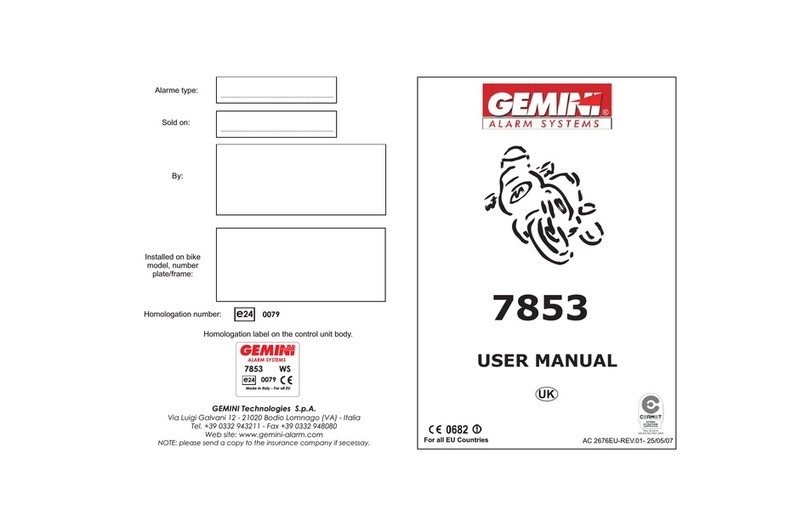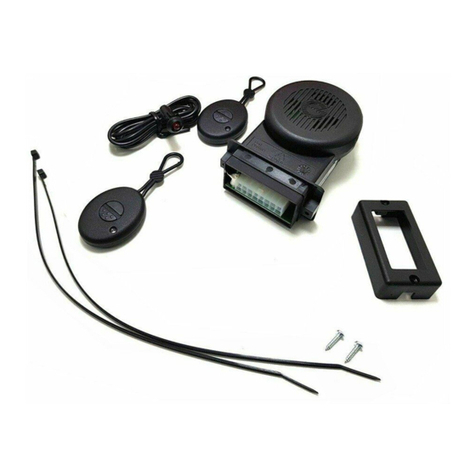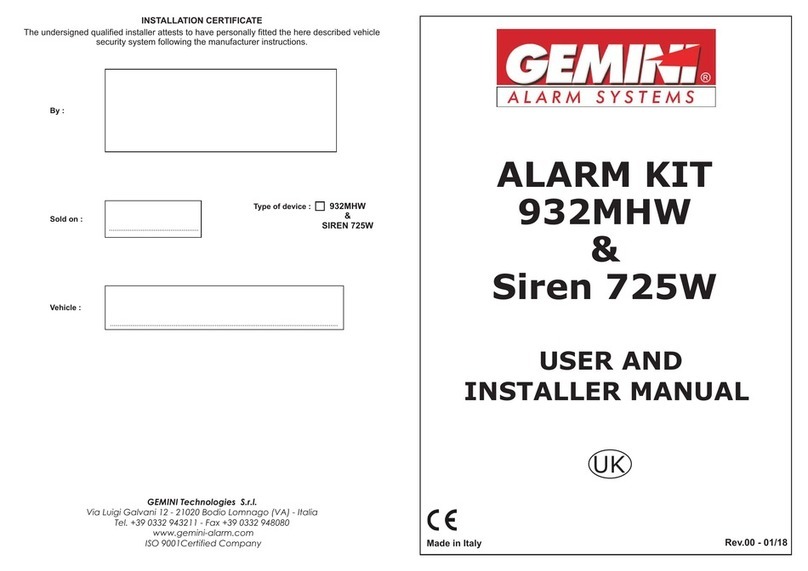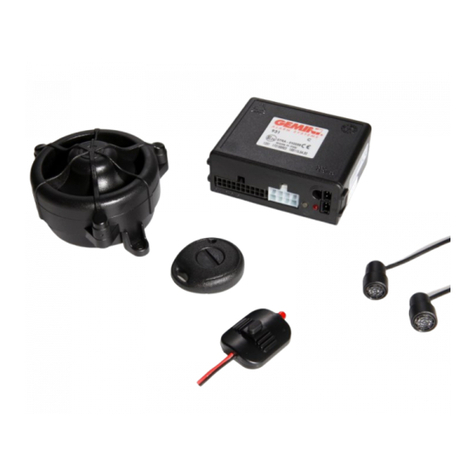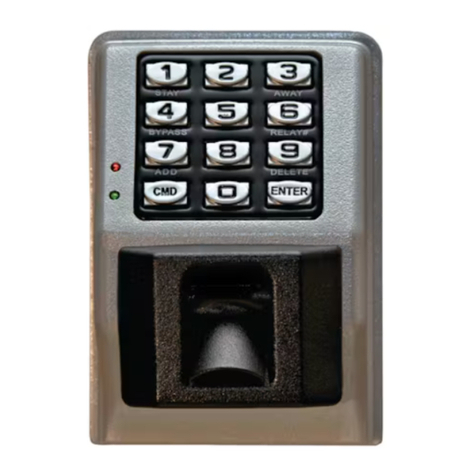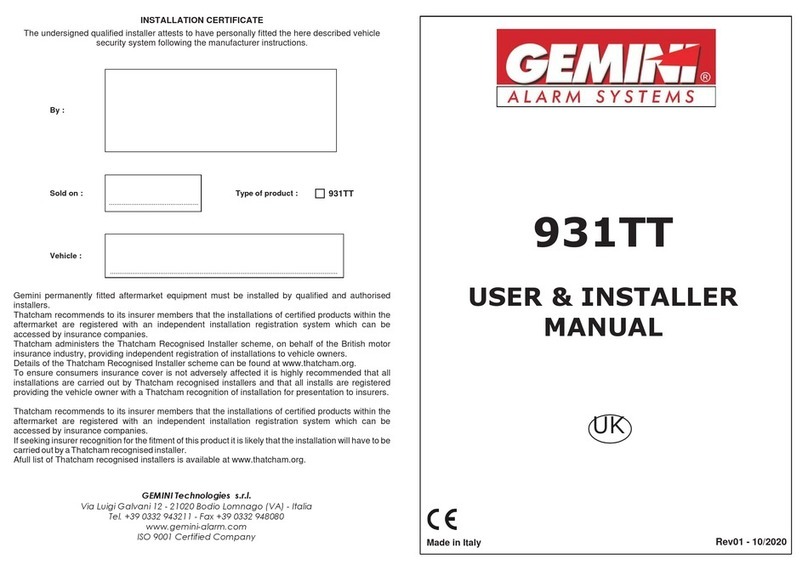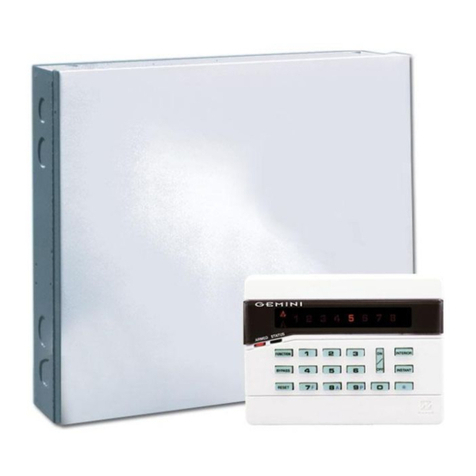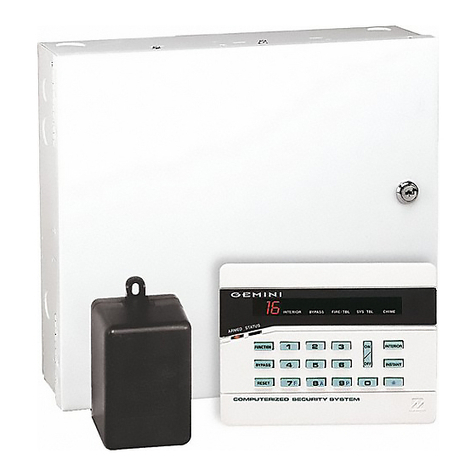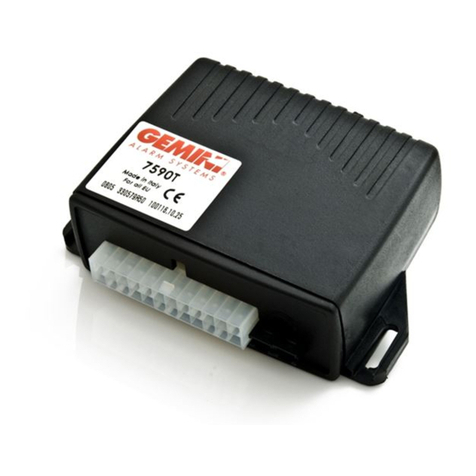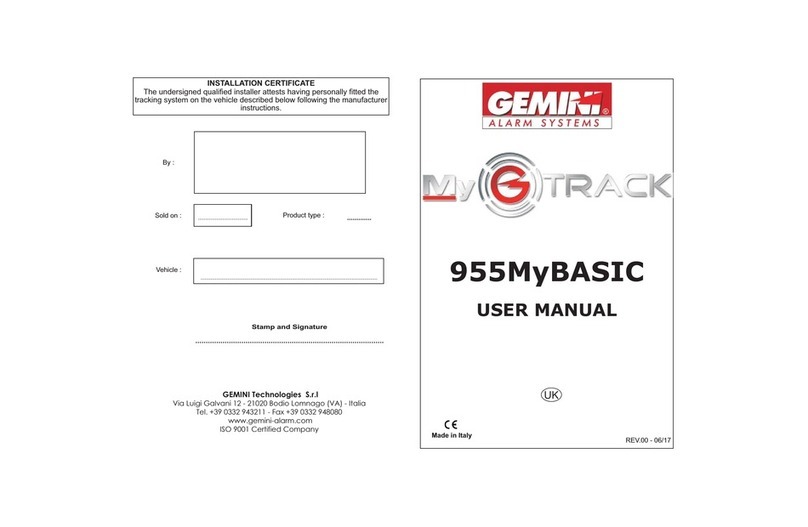
Page 6
3.6 - Motion sensor exclusion
3.10 - Neutral time between alarms events
The alarm built-in sensor which detects tilt, motion or a sudden shock can be
excluded during the first 4 sec. of the arming delay by touching the override key
to its receptacle. The status LED will blink once to confirm the sensor has been
excluded.
Sensor exclusion is bound to each single arming cycle.
When the alarm cycle is over, any further alarm condition will be ignored for 8
seconds; the LED will be ON steady. After this time interval, the system will
return to the armed state confirmed by the blinking LED.
NB:
3.7 - Full Arming
3.8 - Alarm events
3.9 - Limiting acoustic signals
After the 20 sec. arming delay, the alarm is fully armed and ready to detect any
alarm event. The LED will start blinking to confirm the armed state.
If an alarm condition is detected during the armed state, the siren will sound, the red
LED will turn ON steady and the turn indicators will flash repeatedly for approx. 30
seconds.
The following conditions will trigger the alarm:
Cable tampering;
Ignition attempt;
Motion detection (ex. lifting, towing, forcing the steering lock);
Seat/topcase unauthorized access;
Panic siren (button 2).
When the alarm condition ceases, the system returns to the armed state.
To mute the siren during an alarm condition, without disarming the alarm, press
button 2 .
Alarm conditions caused by unauthorized movement or seat/topcase opening,
will trigger a maximum of 8 consecutive alarm cycles. The siren will then be
automatically excluded for the following reasons:
To comply with the regulations in force aimed at limiting noise pollution;
To save power and maximize vehicle battery life;
If, after 8 times, no one checks the vehicle, it is useless to have it sound again.
!
!
!
!
!
!
!
!
Page 7
3.11 - System disarming without alarm memory
3.12 - System disarming with alarm memory
Press remote control button 1 or touch the override key to its receptacle to
disarm the alarm. Disarming is confirmed by 3 Beeps and 3 flashes of the turn
indicators and the LED will turn OFF.
An alarm event detected while the system is armed will be signaled upon
disarming by 2 Bops and 2 flashes of the turn indicators.
The last cause of alarm can be identified by observing the status LED:
2 flashes of the turn indicators, 2 LED flashes and 2
Bops.
3 flashes of the turn indicators, 3 LED flashes and 3
Bops.
4 flashes of the turn indicators, 4 LED flashes and 4 Bops.
5 flashes of the turn indicators, 5 LED flashes and 5
Bops.
: 8 flashes of the turn
indicators, 8 LED flashes and 8 Bops.
:
9 flashes of the turn indicators, 9 LED flashes and 9 Bops.
!
!
!
!
!
!
Ignition attempt:
Topcase/seat tamper:
Wire tampering:
Motion detection:
Wireless magnetic contacts or opening detectors
Wireless infrared sensors (PIR) or wireless hyper-frequency sensors
3.13 - Hazard feature
To make the turn indicators flash as hazard warning lights proceed as follows:
Turn ignition key OFF.
Then turn it back ON; the LED will light up for approx. 1sec.
While the LED is ON, press remote control button 2.
Turn ignition key OFF; the turn indicators will start flashing.
To stop the flashing, turn ignition key ON (and eventually OFF) or arm and
disarm the system via the remote control or the override key.
!
!
!
!
!

